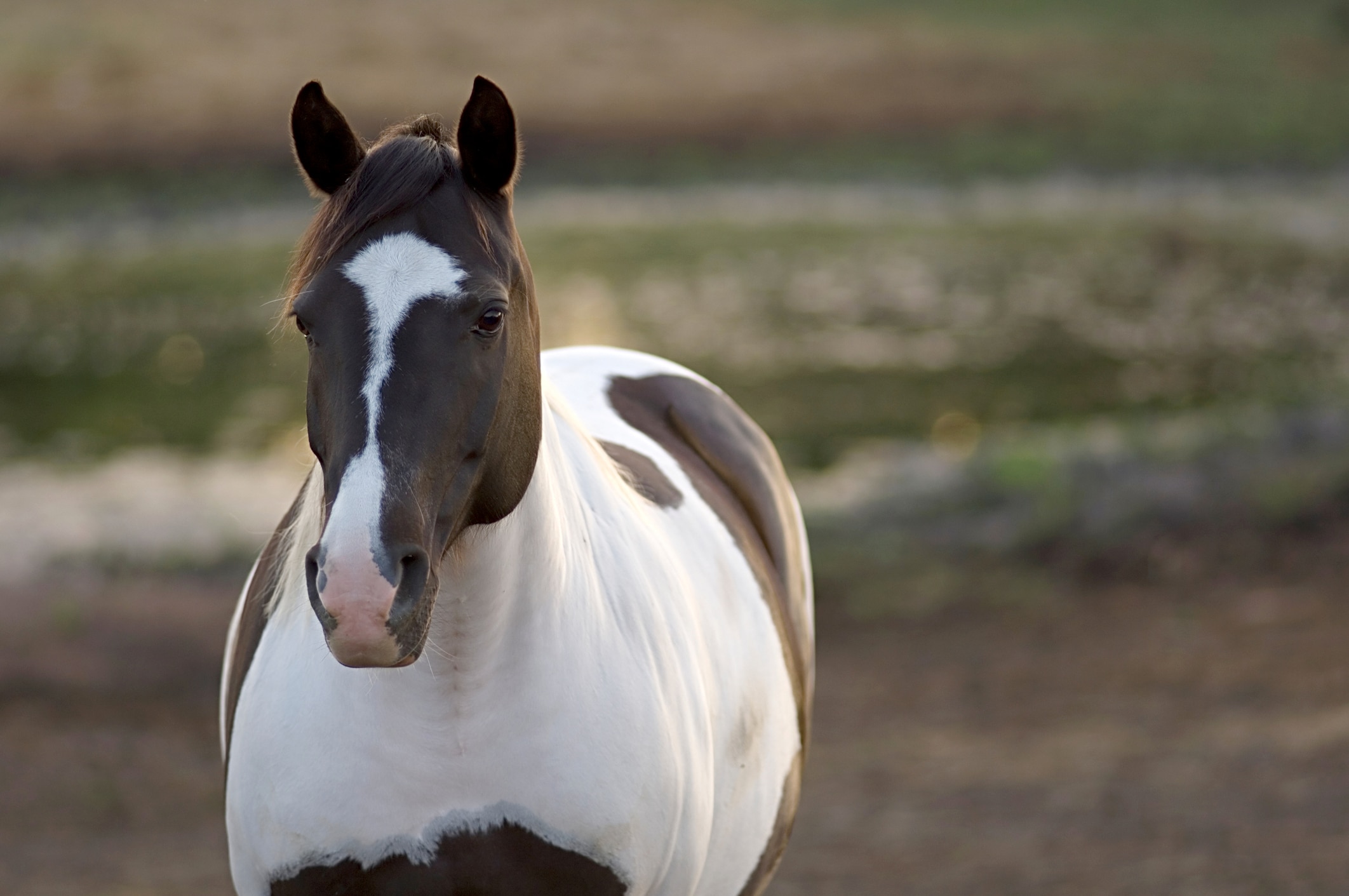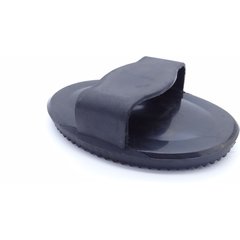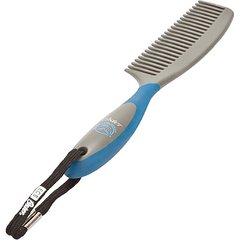American Paint Horse
Zuzule/iStock / Getty Images Plus via Getty Images
The American Paint Horse is one of the most popular equine breeds, known for their striking appearance and friendly disposition. These strong, versatile horses are great for riders and horse owners of all experience levels.
As descendants of horses brought to North America from Spain in the 1500s, beautiful American Paint Horses have an interesting history. Native Americans took an interest in them, as did cowboys. The American Paint Horse Association (APHA) was founded in 1962, and it continues to work on promoting and preserving this breed. To be eligible for APHA registration, horses must meet bloodline and color requirements, and their parents can include Thoroughbreds and American Quarter Horses.
American Paint Horse Snapshot
-
Height: 14 to 16 hands (56 to 64 inches)
-
Weight: 950 to 1,200 pounds
-
Lifespan: 30 years
-
Colors: White and any equine color (e.g., brown, black, chestnut, gray, bay roan, palomino, buckskin), in overo, tobiano, and tovero patterns
Overo Pattern
-
White does not cross the horse’s back between the withers and tail
-
At least one leg or all four legs are dark-colored
-
White markings are irregular, scattered, or splashy
-
Head markings: bald-faced, apron-faced, or bonnet-faced
-
Can be predominantly dark or white
-
Tail is one color
Tobiano Pattern
-
Dark color usually covers one or both flanks
-
All four legs are generally white below the hocks and knees
-
All the white markings are often regular and distinct in appearance
-
Head markings similar to solid-colored horses with a blaze, star, or strip
-
Can be predominantly white or dark
-
Tail is often two colors
Tovero Pattern
-
A combination of tobiano with any of the overo patterns
-
Usually has more white than colored areas and can be nearly all white
-
Contrasting markings are regular and distinct
-
Dark pigmentation usually around the ears and can cover the forehead and eyes
-
Contrasting color coverings over one or both flanks
-
May have spots at the base of the tail
Caring for an American Paint Horse
The American Paint Horse breed is beloved for many reasons. These horses have an endearing personality, are easy to work with, and are relatively easy to keep when it comes to grooming requirements, housing needs, and exercise needs.
This is a suitable breed for equestrians of all experience levels—from those who want a leisurely riding companion to those who are ready to compete in sports with their horse.
However, this breed is at risk of several genetic diseases.

American Paint Horse Health Issues
The American Painted Horse breed is a generally healthy, strong, and hardy breed. But they can be prone to some genetic issues, such as:
Lethal White Syndrome
Lethal white syndrome (LWS), also referred to as lethal white overo (LWO) or overo lethal white syndrome (OLWS), is an inherited disorder. It’s caused by a mutation in the gene that is responsible for producing the frame overo color pattern. This disease causes newborn foals to be born with a white coat and underdeveloped intestines, leading to severe colic. Foals are born white because the mutation that causes this disease is also the same mutation that causes the frame overo white spotting patterns.
There is no treatment for LWS and these foals die within days or are humanely euthanized. Genetic testing of parents can be used to prevent foals from being born with the condition.
Hyperkalemic Periodic Paralysis
Hyperkalemic periodic paralysis (HYPP) is a genetic condition caused by a mutation that leads to high levels of potassium in the horse’s blood. The high level of potassium in the blood leads to the horse being more prone to muscle contraction. Symptoms of an attack include:
-
Shaking
-
Muscle tremors
-
Weakness
-
Paralysis
-
Collapse
Diet and medication can be used to control this condition, which can range from mild to severe and can be fatal. It is best to avoid grain diets that are high in potassium. Medications such as acetazolamide and hydrochlorothiazide have been used to help prevent clinical episodes in some horses, and prevention is the key to this disease.
Paint Horse breeders can use genetic testing to determine the risk of this muscular disease being passed on to offspring.
Polysaccharide Storage Myopathy
Polysaccharide storage myopathy (PSSM) causes an abnormal accumulation of glycogen (a form of sugar that is stored in muscles) leading to muscle cramping and tying up. Symptoms include:
-
Muscle tremors
-
Muscle stiffness
-
Sweating
-
Reluctance to move
-
Soreness and weakness
There are two types: PSSM1 and PSSM2. Both Type 1 and 2 lead to an abnormal accumulation of glycogen storage in muscles, but they are caused by different genetic mutations.
Although there is no cure, this condition can be managed with diet and exercise. Also, genetic tests can be used to avoid passing on PSSM1.
Glycogen Branching Enzyme Deficiency (GBED)
Horses with GBED do not have the enzyme needed to store glycogen appropriately, so they are unable to store the sugar molecules needed for the heart, skeletal muscle, liver and brain. As a result, these vital organs are unable to function properly. This is another genetic condition that can be passed on through horse breeding.
Foals with GBED may be stillborn or be born weak, and the condition is always fatal. Genetic testing can be used to avoid breeding horses that would cause foals to inherit this disease.
What To Feed an American Paint Horse
Talk to your vet about adding any additional supplements to your horse’s daily diet. A vitamin and mineral supplement can provide necessary nutrients a horse might not be getting enough of. Always check with your veterinarian before feeding a new supplement to your horse.
If they’re overfed, American Paint Horses can gain weight easily. It’s important to provide the right amount of food to prevent obesity and health problems related to being overweight, such as:
Work with an equine veterinarian to determine the right types of food—and the right quantities—to feed your horse based on their individual lifestyle.
If your horse has been diagnosed with a medical condition, providing the optimal diet for their unique needs is imperative, so work closely with a veterinarian.
American Paint Horse Disciplines
The American Paint Horse is versatile and can excel in a variety of disciplines. They are ideal companions for all riders, from beginners to experienced equestrians.
These athletic horses can be easy to train and are used in a range of events and competitions, such as:
-
Reining
-
Roping
-
Western pleasure
-
Jumping
-
Barrel racing
-
Trail riding
-
Dressage

American Paint Horse Personality and Temperament
Every horse is an individual, but the American Painted Horse is known for having a calm, relaxed, and friendly personality. These horses are easygoing and intelligent—yet another reason why they are suitable for all levels of riders.
Because they’re easy to train and eager to please, American Paint Horses can perform well in everything from farm work to dressage.
American Paint Horse Training
The American Paint Horse breed can be a pleasure to work with, thanks to the horses’ intelligence, willingness to learn, and laid-back temperament. Training shouldn’t be challenging with these friendly horses, and you can teach them new things at just about any age.
It’s best to start training your horse when they’re young, and to start with simple lessons and commands. If you acquire a horse that has already been trained, you can teach them more advanced commands sooner. Always be gentle and patient, and never punish or be harsh with your horse.
American Paint Horse Grooming Guide
The overo, tovero, and tobiano paint horse patterns are recognized specifically for this breed. No matter your American Paint Horse’s colors, you can follow the same standard procedures for keeping them clean and healthy.
Hooves should be checked every day to make sure there aren’t any signs of injury or infection, and the coat can be brushed several times a week to remove debris and dirt and keep it smooth.
Whenever you brush your horse, also check their ears, nostrils, and eyes.
Coat Care
To care for your horse’s coat, use a curry comb and a dandy brush to loosen and remove dander, debris, and dirt. Stick to using a brush with soft bristles on areas that are more sensitive, like the face and legs.
Use a shedding blade to remove loose hair. To keep the mane and tail smooth, tangle-free, and clean, use a wide-tooth comb specifically designed for those areas.
Recommended Products
Hoof Care
A high-quality hoof pick will make it easy to rid your horse’s hooves of dirt and debris that gets stuck in them. Some hoof picks also have brushes on them to make the job simpler. Move from the back of the hoof to the toe, making sure to carefully clean every area.
Examine your horse’s hooves to be sure there aren’t any problems that need to be addressed by a veterinarian. If your horse needs shoes, work with a farrier and inspect the shoes daily to ensure they don’t need to be adjusted.
American Paint Horse FAQs
What are American Paint Horses used for?
American Paint Horses are used for everything from farm work to pleasure riding. They are strong, athletic, and versatile, as well as intelligent and easy to train. Therefore, they can be taught to perform a wide range of tasks and can excel at a variety of equine sports.
How much does an American Paint Horse cost?
On average, American Paint Horses can cost around $5,000. However, the price of an individual horse will depend on several factors, such as their bloodline, age, level of training, and experience.
How much do American Paint Horses cost to feed?
The cost of feeding an American Paint Horse will depend on the price of their food, which can vary. In addition to pasture for grazing, provide your horse with high-quality hay and grains, a salt block, and any vitamin/mineral supplements that your veterinarian recommends. The overall cost to feed your horse might be $1,000 to $2,000 per year.



